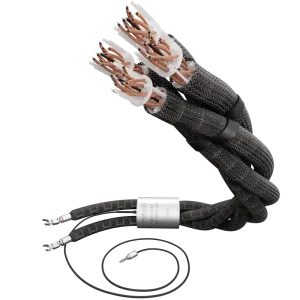BowsAndArrows
Major Contributor
well, i think it's related to the fact that a vacuum is the best dielectric possible (used in some of the super high-end cables), and so air is a close second (suspending the cable in air). compared to the plastic/cotton etc dielectrics used in basic cables. apparently everything from the conductor used to cable geometry to the quality of dielectric used can influence skin effect??
see this design from inakustik speaker cables using AIR as a dielectric and complex geometry as an example. (keep in mind the copper version of this starts at €14,400 for 2m ) https://in-akustik.com/ls-8005-air-00771463par apparently they recommend cable risers to get the best performance out of all of their cables...
) https://in-akustik.com/ls-8005-air-00771463par apparently they recommend cable risers to get the best performance out of all of their cables...

apparently the audioquest engineers tested various lifters on their own cables and noticed that their "Fog Lifters" design with minimal surface contact resulted in the least RF interference coupling. https://positive-feedback.com/reviews/hardware-reviews/audioquest-fog-lifters/ tried to explain some of this stuff...
https://positive-feedback.com/reviews/hardware-reviews/audioquest-fog-lifters/ tried to explain some of this stuff...
btw i do not own or use any of these products. just exploring cable lifters/dampers at the moment. considering DIY solutions for now while i learn more
see this design from inakustik speaker cables using AIR as a dielectric and complex geometry as an example. (keep in mind the copper version of this starts at €14,400 for 2m

apparently the audioquest engineers tested various lifters on their own cables and noticed that their "Fog Lifters" design with minimal surface contact resulted in the least RF interference coupling.
btw i do not own or use any of these products. just exploring cable lifters/dampers at the moment. considering DIY solutions for now while i learn more
